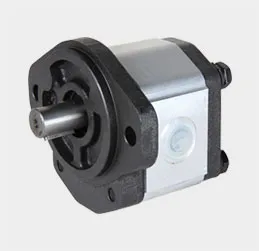stamped metal parts
The Significance of Stamped Metal Parts in Modern Manufacturing
In the realm of modern manufacturing, stamped metal parts play a critical role in various industries, including automotive, aerospace, electronics, and consumer goods. These parts are created through a process known as metal stamping, which involves transforming flat metal sheets into desired shapes and forms. The versatility, precision, and cost-effectiveness of stamped metal parts have made them indispensable in today’s production processes.
What is Metal Stamping?
Metal stamping is a manufacturing process that employs a die to cut or shape metal. The process can be conducted through several methods, including blanking, piercing, bending, and forming. These methods use a high-powered press to exert force on the metal sheet, allowing manufacturers to achieve precise dimensions and intricate designs with relative ease. Typically, metal stamping is most effective with materials like steel, aluminum, brass, and copper, which can be formed into various parts that are used in a multitude of applications.
Benefits of Stamped Metal Parts
1. Cost-Effectiveness One of the most significant advantages of using stamped metal parts is their cost-effectiveness, especially in high-volume production. The initial setup for metal stamping can be high due to the creation of dies and presses. However, once established, the cost per unit decreases significantly as production scales. This makes it an ideal choice for manufacturing components in large quantities.
2. Precision and Consistency Stamped metal parts offer unparalleled precision and consistency compared to other manufacturing methods. The use of advanced technology in designing stamping dies ensures that each part produced meets exact specifications. This consistency is crucial, especially in industries such as aerospace and automotive, where tolerances are stringent and product reliability is paramount.
3. Material Efficiency Metal stamping is a highly efficient process in terms of material usage. Unlike machining processes that cut away material, metal stamping maintains a higher yield since it uses a sheet of metal as its starting point. This reduces waste and allows manufacturers to utilize materials more effectively, which can contribute to lower production costs and a reduced environmental impact.
4. Versatility The versatility of stamped metal parts is another reason for their widespread use. They can be manufactured in various shapes and sizes to fulfill different functional requirements. Industries benefit from stamped components, ranging from small electronic housings to large automotive chassis parts, due to the adaptability of the stamping process.
stamped metal parts

Applications of Stamped Metal Parts
Stamped metal parts find applications across various sectors. In the automotive industry, for example, components such as brackets, chassis, and body panels are commonly stamped from metal. These parts contribute to the structure of vehicles, ensuring safety and durability. The aerospace industry also relies on metal stamping for critical components such as wing ribs, brackets, and bulkheads.
In electronics, stamped parts are used for connectors, housings, and heat sinks. The rapid production capabilities of metal stamping make it suitable for the fast-paced demands of the electronics market, where efficiency is vital. Furthermore, the consumer goods sector employs stamped metal parts in numerous products, including appliances and furniture, making stamping a key manufacturing technique across diverse applications.
The Future of Stamped Metal Parts
As technology continues to advance, the future of stamped metal parts looks promising. Innovations such as computer-aided design (CAD) and computer-aided manufacturing (CAM) are enhancing the design and production processes. These technologies allow manufacturers to create more complex and efficient designs, pushing the boundaries of what’s possible with metal stamping.
Additionally, the integration of automation and robotics in the stamping process is set to revolutionize production lines, enhancing efficiency and reducing labor costs. This shift towards automation will enable manufacturers to meet the growing demand for high-quality, precisely engineered stamped metal parts in an increasingly competitive marketplace.
Conclusion
Stamped metal parts are the backbone of many manufacturing processes, providing cost-effective, precise, and versatile solutions for various industries. Their ability to produce high volumes of components efficiently makes them a preferred choice for many manufacturers. As technology advances and new innovations emerge, the significance of stamped metal parts in modern manufacturing will undoubtedly continue to grow, paving the way for increased productivity and enhanced product quality across different sectors.
-
Precision Casting Prototypes and Engineering Inc – Innovating Global Manufacturing SolutionsNewsNov.24,2025
-
Precision Casting Facility: Advanced Manufacturing for Global Industries | Hairun SourcingNewsNov.23,2025
-
Leading Precision Casting Corporation: Quality Metal Components for Global IndustryNewsNov.23,2025
-
Precision Cast Rods: Definition, Applications & Future Trends in ManufacturingNewsNov.22,2025
-
Precision Cast Iron Surface Plate: The Backbone of Industrial Accuracy and QualityNewsNov.21,2025
-
Precision Aluminum Investment Casting: High-Accuracy Manufacturing for Modern IndustriesNewsNov.20,2025















